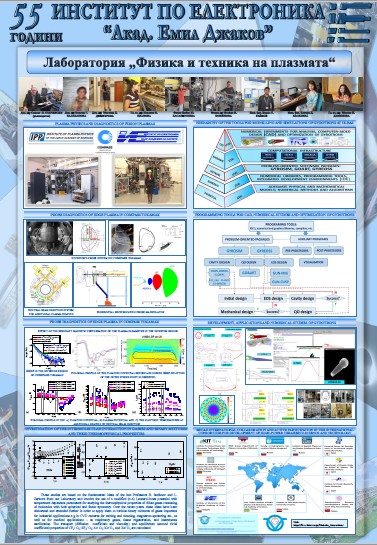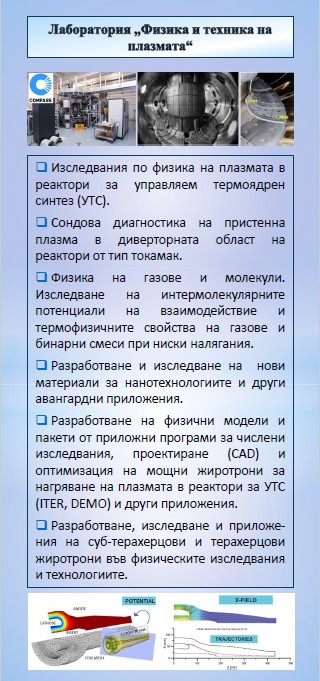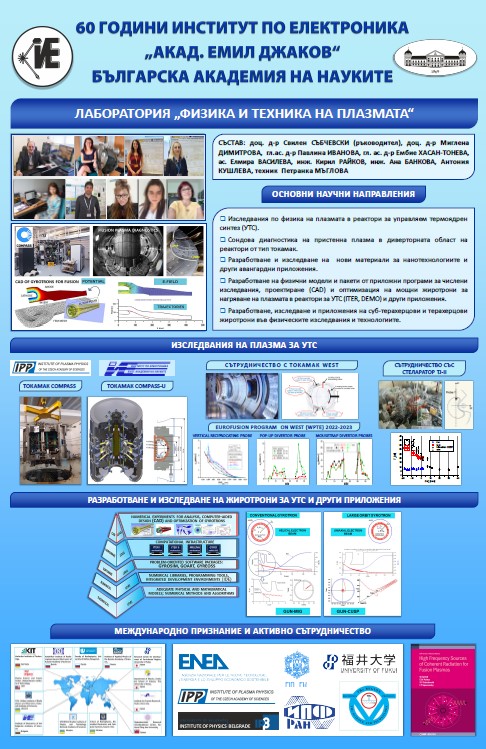
ACADEMICIAN EMIL DJAKOV INSTITUTE OF ELECTRONICS
BULGARIAN ACADEMY OF SCIENCES
72, Tzarigradsko chaussee blvd, 1784-Sofia, Bulgaria

LABORATORY PLASMA PHYSICS AND ENGINEERING
| Activities | Staff | Publications | Posters |
RESEARCH ACTIVITIES
1. Plasma physics and diagnostics of fusion plasma in tokamaks
In recent years, one of the classical techniques for plasma diagnostic based on the Langmuir probe method has been applied successfully to magnetically confined plasma in various experimental reactors (tokamaks and stellarators) for controlled thermonuclear fusion. This approach has been used actively in a number of systematic experimental studies carried out in various fusion devices. Among them was the COMPASS tokamak (Fig.1 and Fig. 2) at the Institute of Plasma Physics of the Academy of Sciences of the Czech Republic (IPP-ASCR), as well as the tokamak ISTTOK and the TJ-II stellarator (CIEMAT) in Spain. Below we summarize some of the most important experimental results.
The scrape-off-layer (SOL) parameters in the COMPASS tokamak were studied using a Langmuir probe mounted on a horizontal reciprocating manipulator. The radial profiles of the plasma potential, the electron energy distribution function (EEDF) and the electron densities were derived from the measured current-voltage probe characteristics by applying the first-derivative probe technique (FDPT). This technique employs the electron part of the Langmuir probe current-voltage (IV) characteristic and yields information on the plasma potential and the EEDF. It was shown that close to the tokamak wall the electron energy distribution function is Maxwellian, while in the SOL, in the vicinity of the last closed flux surface and inside the confined plasma, the electron energy distribution function is bi-Maxwellian with a low-energy electron fraction dominating over a higher energy one. Results obtained from both the classical and the first derivative techniques were also compared and discussed. It was demonstrated that the latter technique provides values for the plasma potential in the scrape-off layer of tokamak plasmas with an accuracy of about ±10%. It is worth mentioning that the classical probe technique allows one to evaluate the plasma potential only (provided both the electron and ion temperatures are known and assuming a Maxwellian distribution), while the FDPT can be applied for a correct evaluation of the plasma potential even in the case of a non-Maxwellian EEDF.
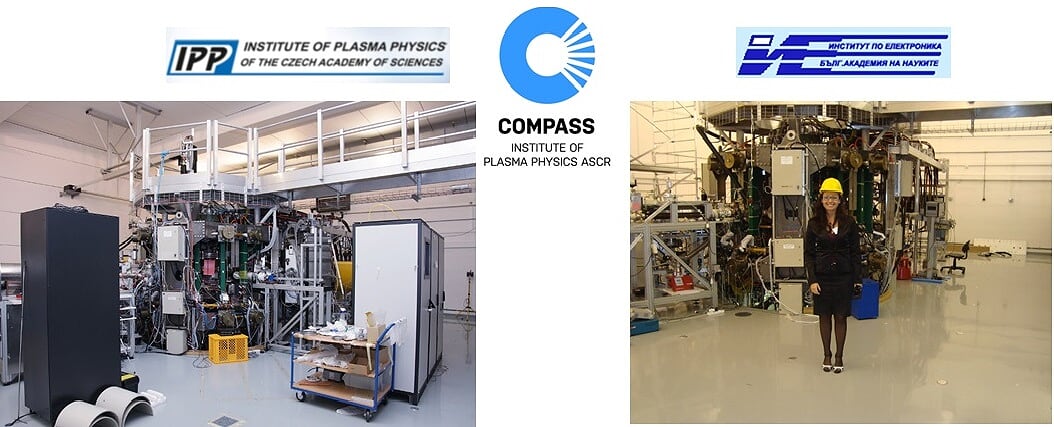
Fig. 1 COMPASS tokamak at IPP-ASCR, Czech Republic
Concerning the studies of the plasma parameters in the COMPASS divertor during the shots with ohmic D-shaped plasmas, it was found that, in the vicinity of the inner and outer strike points of the divertor, the EEDF can be approximated by a bi-Maxwellian, with a dominating low-energy electron population (4-7 eV) and a minority of higher energy electrons (12-25 eV). In the region between the two strike points, the electron energy distribution function was found to be Maxwellian with temperatures in the range of 7-10 eV. The first derivative probe technique was applied also to studying the plasma parameters in the ISTTOK tokamak. The current-voltage characteristics were measured using new electrical probes mounted on a horizontal manipulator, one oriented in parallel and the other perpendicularly to the magnetic field lines. Using the first-derivative probe technique, the plasma potential and the EEDF at different radial positions were acquired. It was found that in the vicinity of the last closed flux surface (LCFS), the EEDF is non-Maxwellian and can be approximated by a bi-Maxwellian one with a dominant cold electron population and a minority group of hot electrons. In the limiter shadow, however, the evaluated EEDF is Maxwellian.
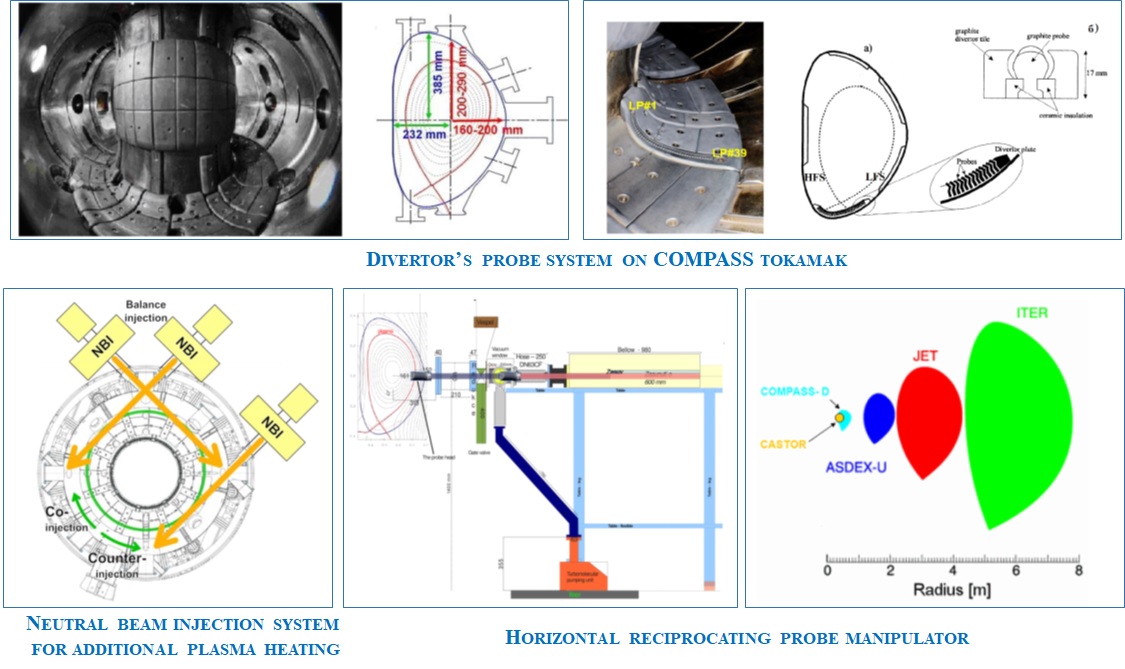
Fig. 2 Experimental setup at COMPASS tokamak
The latest studies carried out in COMPASS tokamak have been focused on the investigation of the dependence of the plasma parameters and the EEDF in the divertor region on the experimental conditions during an additional heating of deuterium plasma by a neutral beam injection (NBI). A detailed investigation of the influence of the resonance magnetic perturbations has been conducted recently. Additionally, a comparison has been made between the basic plasma parameters obtained using the conventional (thre- and four-parametric) techniques and the first-derivative probe method, respectively. Using the obtained data, the radial distribution of the power density of the thermal flow in the divertor region has been calculated.
The data obtained provide a better physical insight into the physical processes that affect the operation of the COMPASS tokamak and the TJII stellarator. The techniques applied in the above-mentioned investigations can be used to study other similar reactors for fusion research. The work on the above topics was carried out in the framework of the collaboration between IE-BAS, University of Sofia and IPP-ASCR.
2. Modeling, simulation, computer aided design (CAD), optimization, and numerical studies of powerful gyrotrons for fusion research and for novel applications
The gyrotrons are the most powerful sources of coherent radiation that can operate in both long pulse and CW regimes in a wide frequency range from the sub-terahertz to the terahertz frequency bands and have many applications in the fundamental physical research and in various advanced technologies. For example, high-power microwaves generated by megawatt-class gyrotrons are used in various reactors for controlled thermonuclear fusion (e.g. tokamaks, stellarators, and, most notably, ITER and DEMO) for plasma start-up, for electron cyclotron resonance heating (ECRH) and electron cyclotron current drive (ECCD) of magnetically confined plasmas, as well as for plasma diagnostics (based on collective Thomson scattering) and plasma stabilization (e.g. suppression of the neoclassical tearing modes). At the same time, the sub-THz and THz gyrotrons are used as radiation sources in many advanced spectroscopic techniques, materials processing, novel medical technologies, etc.
Our work on numerical investigation and CAD of gyrotrons includes (see Fig.3): (i) theoretical studies focused on the development of adequate, self-consistent and informative physical models formulated in two (2D) and three (3D) space dimensions; (ii) maintenance, upgrade, improvement, testing and benchmarking of the available computer codes and the underlying numerical libraries, compilers, integrated development environments (IDE); (iii) development of novel software tools for simulation of the electron-optical system (EOS) of the tube, electro-dynamical system (resonant cavity) and the quasi-optical mode converter using efficient numerical methods and algorithms, advanced computing environments and programming techniques, as well as (iv) conducting numerical experiments for analysis, computer aided design (CAD) and optimization of various gyrotrons.

Fig. 3 Hierarchy of the tools for modelling and simulation of gyrotrons at IE-BAS
The codes under development are integrated in several problem-oriented software packages. They are used for CAD, numerical investigation and optimization of high-performance gyrotrons that belong to two major classes of tubes. The first one includes high-power (megawatt-class) gyrotrons for fusion research with typical output frequencies in the range from 120 GHz to 170 GHz. The second one encompasses radiation sources that are less powerful (from several tens of watts to several kilowatts) but provide higher frequencies from submillimeter wavelengths up to the sub-THz and THz regions of the electromagnetic spectrum. The latter class of gyrotrons has demonstrated a great potential for bridging the so-called "THz frequency gap" and has opened the road to many novel and diverse applications in areas such as spectroscopy, imaging, sensing and inspection of different materials, microwave-assisted processes, advanced thermal treatment, new medical technologies, etc.
In most of the available simulation tools, the implemented physical models are formulated in two dimensions (2D) and neglect many factors and phenomena (for example emission nonuniformity, misalignment of the electrodes and magnetic coils) that are inherently three-dimensional. In order to overcome these limitations, a work on the development of the GYREOSS (Gyrotron Electron-Optical System Simulation) was initiated recently. GYREOSS is a problem oriented software package for trajectory analysis (ray tracing) and PIC simulations of the EOS of gyrotrons in both 2D and 3D. The field solver of GYREOSS utilizes the finite element method for solving the boundary value problem for the Poisson equation and is realized as a FreeFEM++ script for the integrated environment FreeFEMM++-cs. In the relativistic particle pusher of GYREOSS, a second-order leap-frog Boris-Bunemann scheme for tracing the motion of the particles is implemented. For allocation (scattering) of the space charge to the nodes of the computational mesh, an efficient charge-conserving algorithm is used. The overall structure and the program implementation of the computational modules allow the current serial (sequential) version to be parallelized and a future work in this direction is planned.
The research team working on the development of GYREOSS package maintains a collaborative website of the project at http://gyreoss.wikidot.com, which provides more details and illustrative examples.
3. Sub-THz gyrotrons for novel applications
The remarkable recent progress in the development of sub-THz and THz gyrotrons has opened many new opportunities for their usage as powerful sources of coherent radiation in a great number of novel and prospective applications in various scientific and technological fields. The Research Center for Development of Far-Infrared Region (FIR UF Center) at the University of Fukui, Japan is one of the worldwide recognized leaders in the development, study, and application of such gyrotrons. The Institute of Electronics (IE-BAS) has a longstanding (more than 18 years) and fruitful collaboration with FIR UF in the framework of an Agreement for Academic Exchange and a Memorandum of Understanding. IE-BAS participates in the International Consortium for Development of High-Power Terahertz Science and Technology, which was organized by FIR UF and started its work in 2015. In this consortium participate 13 institutions from 9 countries (visit: http://fir.u-fukui.ac.jp/Website_Consortium ).
The gyrotrons developed in FIR FU Center form the so-called Gyrotron FU Series which includes several groups of devices, namely FIR FU (pulsed tubes), FIR FU CW (oscillators operating in a continuous wave mode), FIR FU CW C (compact tubes), and FU CW G (radiation sources with internal mode converters that form well-collimated Gaussian beams). Among the novel applications of these gyrotrons are several advanced spectroscopic techniques (most notably ESR spectroscopy, DNP enhanced NMR spectroscopy), X-ray detected magnetic resonance, and studies on the energy levels of positronium (Ps). A good example of a pioneering application of a gyrotron in a medical technology is the recently developed concept of a dual beam irradiation facility for an experimental cancer therapy based on the simultaneous and/or sequential application of two beams, namely a beam of neutrons and a continuous wave or intermittent sub-terahertz wave beam produced by a gyrotron (forming a so-called "quantum beam").
A central topic of the collaboration between FIR-UF and IE-BAS is related to the development of the problem-oriented software package GYROSIM (see Fig. 4) and its utilization for numerical investigations and computer-aided design of sub-THz gyrotrons for the above-mentioned applications. The components of GYROSIM are specialized to different subsystems (EOS, cavity resonator, quasi-optical mode converter) and are based on adequate physical models. Recently, several novel computational modules were developed and integrated into the package. They were used in a numerical study on finite-bandwidth resonances of high-order axial modes (HOAM). The approach proposed allows one to study the frequency response of the cavity using different resonance curves obtained from the solution of the inhomogeneous Helmholtz equation for the field amplitude by the finite-difference method (FDM).
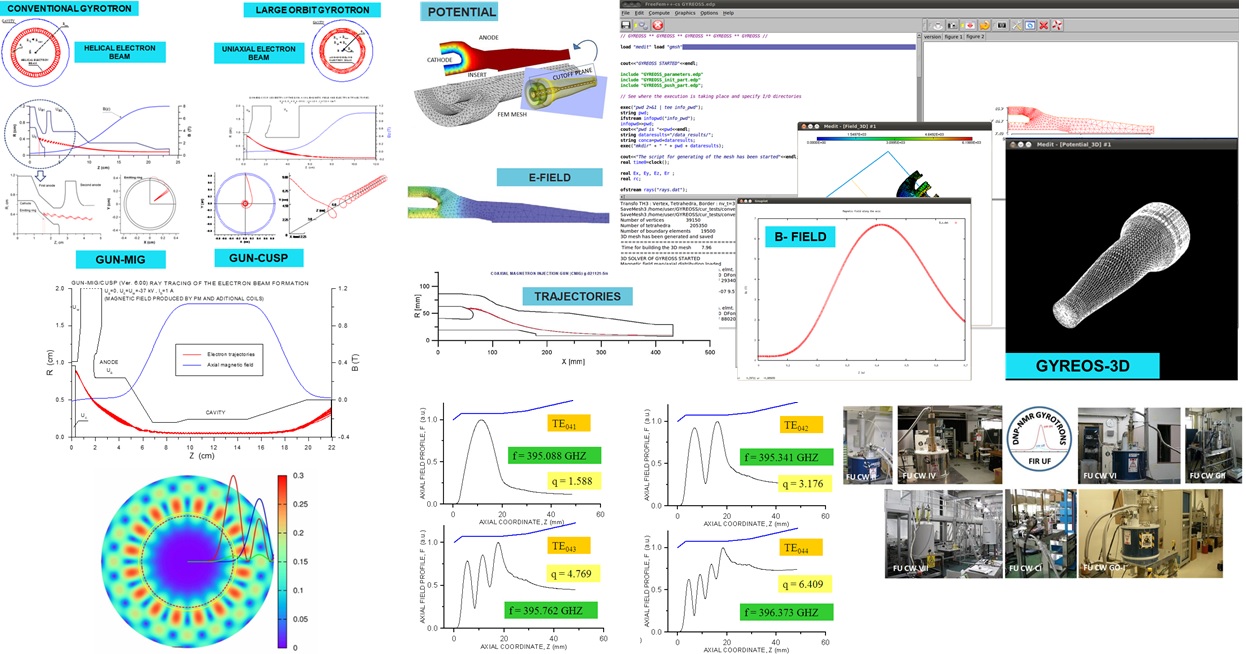
Fig.4 Collage of screenshots illustrating the numerical experiments for CAD and numerical studies of gyrotrons using the problem-oriented software packages GYROSIM and GYREOSS
4. Investigation of the intermolecular potentials and the thermophysical properties of gasses and binary mixtures at low pressures
The studies on these topics are based on the fundamental ideas of the late Professors B. Stefanov and L. Zarkova from our Laboratory and involve the use of a (n-6) Lennard-Jones potential with temperature dependent parameters for studying the thermophysical properties of dilute gases consisting of molecules with both spherical and linear symmetry. Over the recent years, these ideas have been elaborated and extended further in order to apply them not only to gasses, but also to various binary gas mixtures that are important for industrial applications, such as micro- and nano-electronics, combustion etc. Currently, the research team working on this topic includes Dr. M. Damyanova and Dr. E. Balabanova, in collaboration with Professor U. Hohm from the Technical University of Braunschweig.
The calculating procedures developed for evaluation of the thermophysical properties of gasses consisting of spherically and linearly symmetric molecules are applied to substances and mixtures important for the electronics. The efforts of the team are aimed at understanding the processes taking place in etching devices and CVD chambers. In both dry-etching and CVD chambers cleaning, substances as CX4 (X=Cl, F), SF6, NF3, and their mixtures with O2 are important. Therefore, reliable thermophysical data are needed for an optimization of the underlying processes. They can be obtained by our calculating procedure. Currently, the transport (diffusion coefficient and viscosity) and equilibrium (second viral coefficient) properties of SF4/O2, SF6/O2, Ar/O2, KrO2, and Xe/O2 are being studied.
5. Nanotechnology and novel advanced materials
Conducting research and providing expertise in the field of nanomaterials and nanotechnology have always been among the traditional activities pursued by the Laboratory.
The research activities are aimed at studying the high-temperature processes in the inorganic nanoparticle synthesis and applications. The expertise in the field of nanotechnologies is provided by Dr. E. Balabanova, who was involved in the assessment of ISO and CEN standard documents as a member of the National Coordination Council on Nanotechnology and a leading editor of the journal "Nanoscience & Nanotechnology Nanostructured Materials Application and Innovation Transfer" (ISSN 1313-8995). This periodical belongs to the family of journals published by BAS and has demonstrated a remarkable development in the recent years (visit: http://nsc-nt.ipc.bas.bg/).
In the framework of the international collaboration with FIR UF in Japan and the Siliwangi University in Indonesia we are working on the development and investigation of advanced ceramics and other novel materials (e.g. mullite-based ceramics, ceramics based on TiO2 and silica xerogel, SnO2 glass composite, activated carbon films for electric double layer capacitors, etc.).
| Close window | Top |


